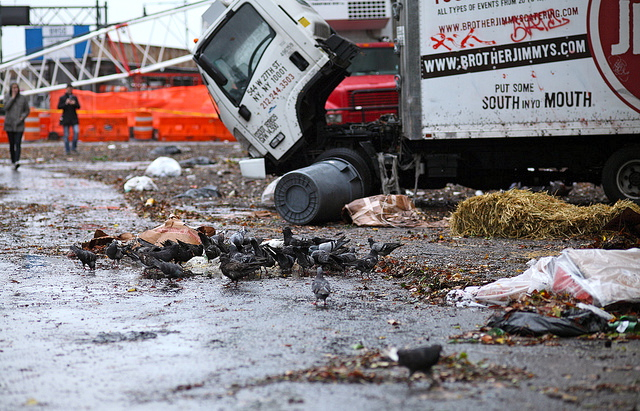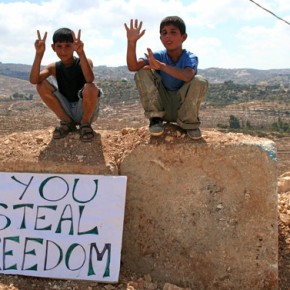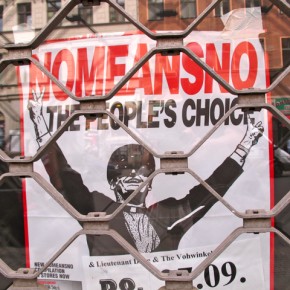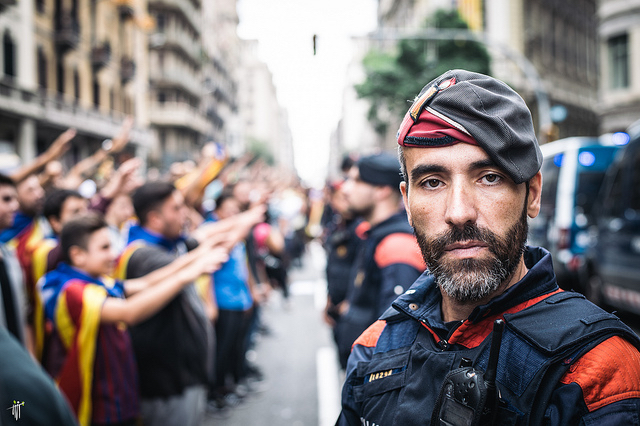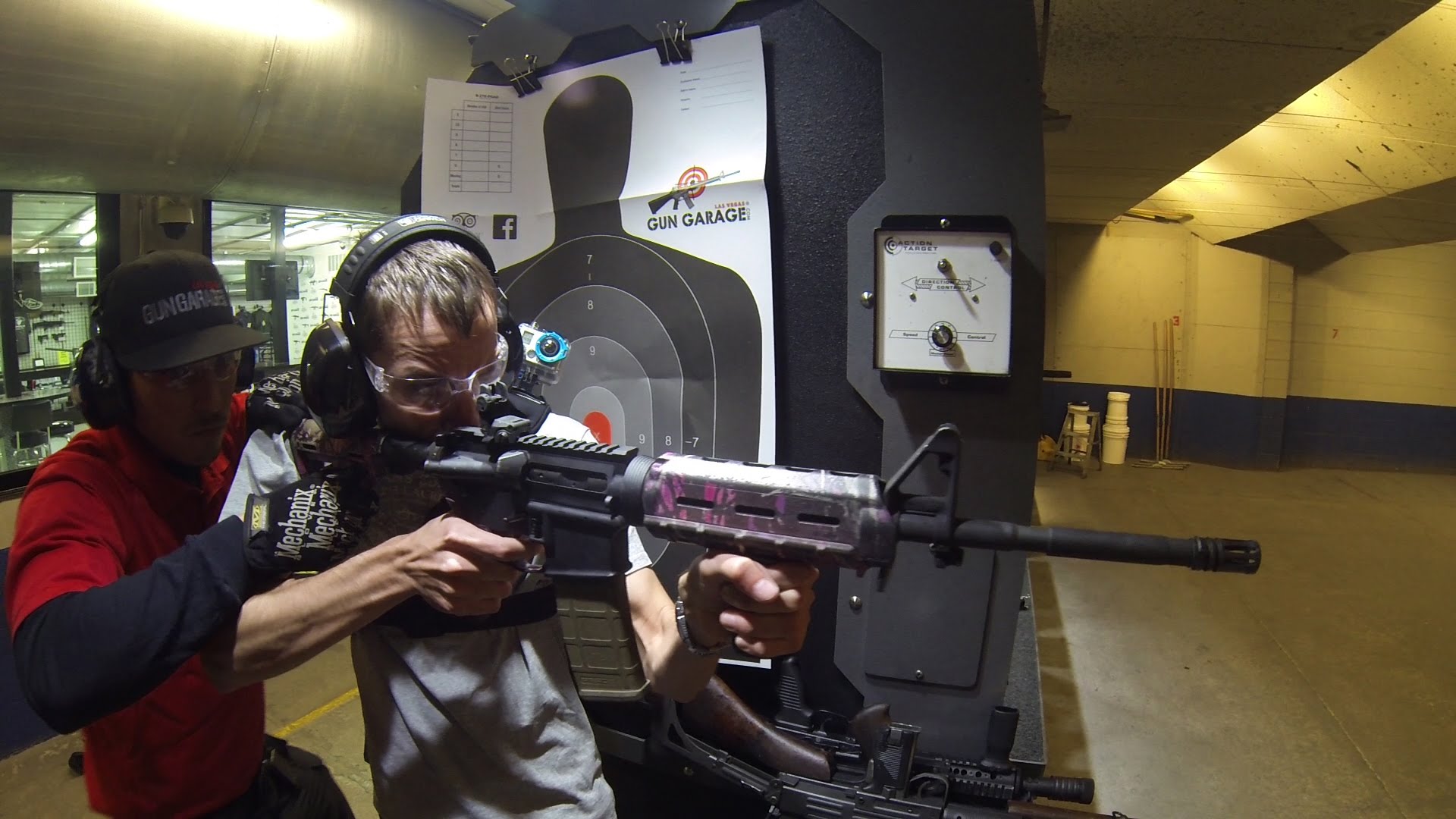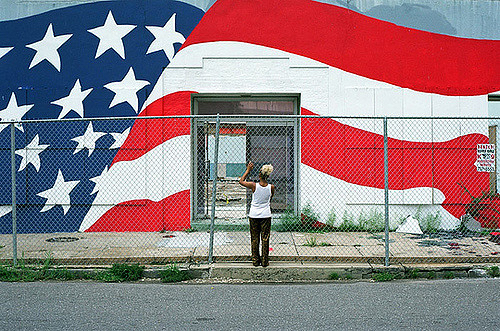Mitt Romney thinks disaster relief should be privatized. In the wake of Hurricane Sandy, the idea of fobbing off FEMA’s services has been rightfully focused on for its coldness. However, given that this policy position was announced months ago, it’s surprising that Hurricane Katrina was not immediately brought to bear in criticisms of Romney’s proposal. Of course, Katrina’s absence from this discussion is predictable. The disaster did not actually occur in America, whereas Sandy did. Well, let’s say the America that counts.
Let me explain. The US government’s responses to the two hurricanes could not have been more different. Though I would prefer that its superior reaction to Sandy was a consequence of what was learned from Katrina, I’m not so sure this is the case. My sense, as someone who just lived through the recent hurricane in New Jersey, is that government relief efforts were superior here by dint of location, not out of any innate sense of obligation. After all, this is one of the wealthiest parts of the United States. Even if presidential elections weren’t a week away, the government’s response would have likely been the same.
The northeastern US isn’t the first place that the outside world associates with race. Rather, whenever the term is raised, especially amongst Europeans, we most likely think of the American south, and the Civil Rights Movement’s struggles there during the 1960s. This makes it difficult to discern the ethnic character of politics in other parts of the United States, particularly the Tri-state Area, whose multiethnic makeup still betrays a remarkably hierarchical, if invisible to many, pecking order in this country. It is, for lack of a better way of putting it, still incredibly white.
‘White’, to these eyes, does not mean monocultural, as affluent minorities such as Asian and Indian Americans are included in the mix. By ‘white,’ I mean an America that emphasizes values intrinsically associated with the ancien regime, with all of the negative surpluses this implies: competition and consumerism, and a highly militarized relationship with the outside world. Not to mention increasingly apocalyptic anxieties, not too dissimilar from those found in the Bible Belt. If you believe that the strangely voyeuristic, tabloid media approach to Sandy we’re seeing is just about hurricane damage, then you’re ignoring this cultural aspect of the news coverage.
Embedded in this hysteria is a growing unease about the violence of the American dream. Given the discomfort that many feel in a world of increasing inequality and threats of Islamic terrorism, environmental catastrophe assumes its place in the pantheon of de-stabilizers. Unfortunately, there is an obnoxious quality to how such fears get filtered by the media. Apocalyptic fantasies are an obvious coping mechanism for a certain kind of American to rationalize the status quo, not all Americans. Who are they? Again, I’m impelled, by virtue of the Protestant character of the fantasy, to think of them as white. And/or wealthy, as I imagine the perceived threat is about losing very real privileges.
It is unfortunate that many of my neighbors have suffered undue hardship as a consequence of Sandy. It is true that many people have lost their homes and livelihoods. Yet, it is also true that, because of our location, disaster relief has been incredibly efficient compared to Katrina. I have every expectation we will all come out of this better off, with much of the damage to our properties and our infrastructure repaired. The perspective it gives, about our own privilege, here in the Tri-state Area, compared to that of New Orleans, is remarkable.
Hurricane Sandy occurred in an area of the United States where the country’s elites are entrenched: the Jersey Shore, Manhattan, and the crown jewel, Connecticut. The amount of wealth concentrated in this part of America, old money in particular, is astonishing. New Orleans and nearby areas also affected by Katrina could not boast of anything similar. Indeed its population largely exists at the other end of America’s economic spectrum. As has been repeatedly state over the years, Washington’s response to Katrina was incompetent, worse, uncaring. Surely, the hurricane did not produce the same mobilization as Sandy, and this is despite the fact that the damage to New Orleans was obviously more intense.
By now, we have all seen sections of lower Manhattan that have been totally flooded, and have read stories about how many office and apartment buildings in the area will remain uninhabitable for the next few months. Still, it’s hard to feel the same sense of horror when, following the bursting of the levees in New Orleans, (as a result of incompetence by the Army Corps of Engineers) six hundred people were killed.
Relief efforts after Sandy were in full swing three days after the event and began almost immediately, while in New Orleans, at that same point, federal authorities from FEMA had not even arrived yet. Many of my neighbors are lamenting the fact that they have had to spend days without electricity and running water. Most areas of New Orleans did not have basic utilities for weeks, in some districts for nearly a year. Emergency crews are rapidly draining the flooded areas of Manhattan. Floodwaters remained in New Orleans for months afterwards.
Throughout Hurricane Sandy, images were broadcast of white Americans being rescued by emergency personnel on house rooftops. No reference was made to the largely black New Orleans residents who waited for days, in peril, for the same government assistance.
Reconstruction plans are being rapidly drawn up, and government action has been firm, such as in Connecticut, where Governor Daniel Malloy is forbidding the use of hurricane deductibles by insurance companies in his state (since Sandy was a post-tropical cyclone rather than a hurricane.) Once again, comparisons to Katrina are important. In New Orleans, insurance payments were often greatly delayed, while some city residents never even received assistance, as their hurricane insurance did not include flood damage. Republican-aligned developers even went so far as to take advantage of reconstruction to rapidly gentrify large areas of the city (and rebuild upper class areas first) while slowing its pace until after the next elections in order to disenfranchise large parts of the electorate.
Damage to areas such as the Atlantic City boardwalk will be addressed promptly, just as they were following Hurricane Irene last year. Seven years after Katrina, New Orleans’ Lower Ninth Ward still has not reopened its hospital, supermarkets, or its police and fire station. As the racism attached to the US government’s failed response to Katrina became increasingly clear, the pressing question was “is this what a super-power looks like?” Today, as America desperately congratulates itself for its disaster preparedness post-Sandy, that question has become, “Why does disaster only matter when it’s them?”
This has been particularly apparent in New York City, where gentrification and the rapid increase in wealth among Manhattan’s elite allowed for its richest residents to either stay in hotels or simply leave the city. For those who remained, poorer New Yorkers still served white America during the storm as firefighters, taxi drivers, maids, delivery people, and so on. Wealth and particular types of employment meant the difference between spending the storm in safe surroundings with loved ones, and in service of the wealthy. It’s been argued that emergency personnel in particular had the option of not working, and were also awarded hazard pay. Staying home and not being paid, as opposed to working during a natural disaster and being paid, is not a legitimate choice for many New Yorkers.
As affluent residents complained about the flooding and power outages, New York’s much less affluent service workers and public servants worked tirelessly to assist them. Many of those who worked during Sandy were immigrants across the age spectrum, though some were also white residents born in New York City. This is a crucial detail. ‘White’ America also covers economic exploitation of those who are superficially a part of it.
If this is the power dynamic of New York in disaster, the city’s rapidly escalating income disparities appear that much more stark. According to census data, the wealthiest 20% of city residents had a median income of $223 285 in 2011, an increase of $1, 919 from 2010. The poorest 20%, on the other hand, had a median income of $8 844, which was a decrease of $463 from 2010. Manhattan’s richest fifth made forty times as much than its poorest fifth in 2011, which is up from thirty-eight times in 2010, and higher than the inequality rates of many developing countries. New York’s example was a microcosm of how exploitation will doubtless define disaster response throughout the country for years to come.
Climate change will place pressure on America to foster a more equitable society. Certainly, the kindness and resolve that has been exhibited by individual citizens, emergency personnel, and political leaders during this disaster (including New Jersey’s Republican Governor Chris Christie, who praised President Obama for his handling of the hurricane) is evidence to this effect. For however long, ‘white’ America has been humbled by the storm. The question is how long. I shudder to think what a government run by a President dedicated to privatizing disaster relief will do to this country.
Photograph courtesy of ccho. Published under a Creative Commons license.
